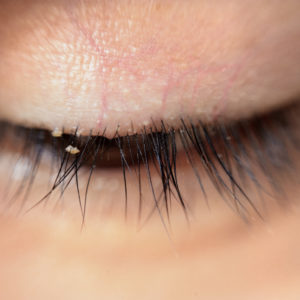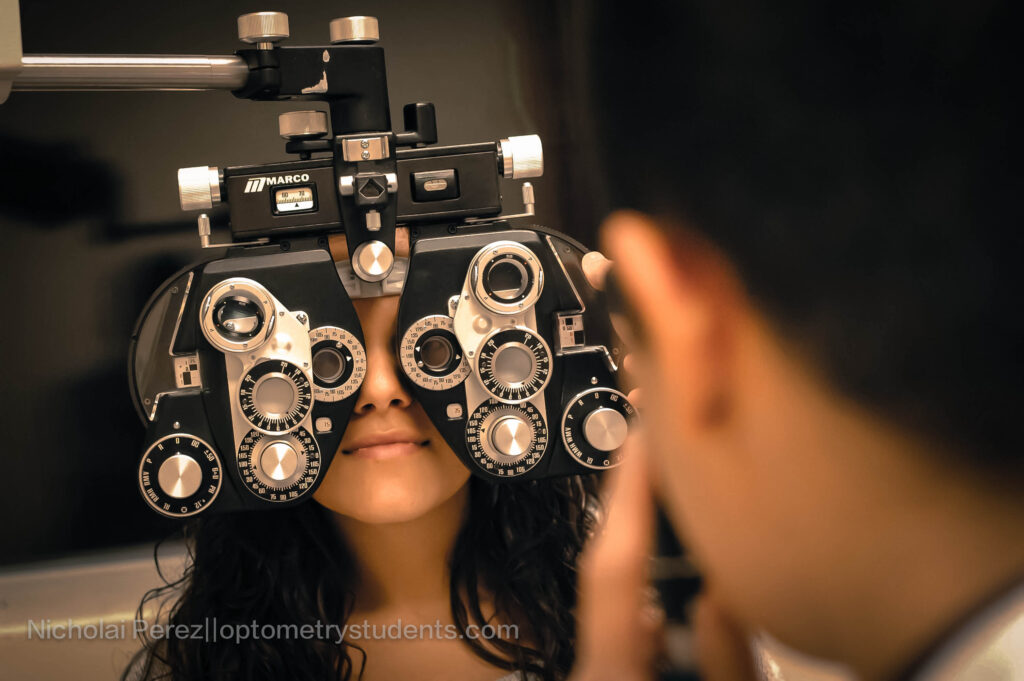Your body, including your eyelids, is covered by mites.

On average, the human body is covered with millions of mites at any given time. Some scientists believe these mites live in symbiosis with humans, surviving off the dead skin cells that we slough off. Others believe the relationship is more commensalistic, where a mite lives off of the sebum of our oil glands and remain largely unnoticed.
Through regular eyelid hygiene, we are able to keep the population of the mites at bay. However, when there is an overgrowth of mites on the lash, problems can arise.
In the world of optometry, demodex is the primary culprit for both anterior and posterior blepharitis. Demodex mites can be found in two species: Demodex folliculorum in hair follicles and demodex brevis in sebaceous glands. Demodex emerge at night around the base of our eyelashes. Overgrowth of demodex can result in blepharitis, causing inflammation, itching, and flaking of the eyelid margins.
Where did these mites come from? Scientists believe they came from our ancestors who lived in close relationships with wolves and the first domestic dogs. In fact, demodex brevis has similar characteristics to the mites seen in canine hair follicles. Moreover, the demodex species in people from different parts of the world have slightly different characteristics, demonstrating co-evolution alongside humans.
Demodex populations are generally the same among all human populations. On average, there are 1-2 mites per square centimeter on your eyelids. For patients with acne rosacea, however, the average can be 10-20 mites per square cm. Many scientists believe these increased numbers prove that demodex live off of sebaceous excretions, since rosacea is a disease of inflammatory excess sebum production.
Imagine you have a patient suffering from demodex blepharitis. What are you going to do? Although demodex only has a 2-3 week life cycle, you want to treat an induced blepharitis immediately. Tea tree oil has been found to be the most effective at killing both the egg and larvae of demodex. Prescription lid scrubs, especially those with tea tree oil, are often used to help remove the mites, and doctors can treat patients in-office with a BlephEx procedure. Eyelid maintenance with these lid scrubs, which are made by a variety of manufacturers, is crucial to keeping the mites from recurring.
Living completely mite-free is almost impossible. A study focusing on a patient population in Thailand revealed on average 40% of patients over 40 and 60% of patients over 60 are covered in demodex. Moreover, mites can be transferred from human contact as well as from mattresses, pillow cases, and makeup. The most effective way of remaining asymptomatic is to keep the mite population at bay.
As you begin to transition to life in the clinic, make sure to educate your patients about the prevalence of demodex and check for ocular manifestations of its overgrowth by doing a detailed examination of lids, lashes, and margins.


